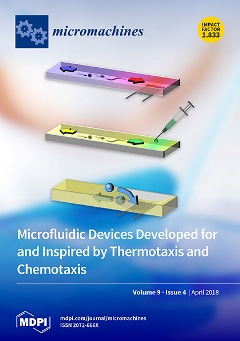1
Department of Biomolecular Engineering, Graduate School of Engineering, Nagoya University, Furo-cho, Chikusa-ku, Nagoya 464-8603, Japan
2
Department of Applied Chemistry, Graduate School of Engineering, Kyushu University, Moto-oka 744, Nishi-ku, Fukuoka 819-0395, Japan
3
Japan Science and Technology Agency, PRESTO, 4-1-8 Honcho, Kawaguchi, Saitama 332-0012, Japan
4
Graduate School of Engineering, Kyoto University, Katsura, Nishikyo-ku, Kyoto 615-8510, Japan
5
ImPACT Research Center for Advanced Nanobiodevices, Nagoya University, Furo-cho, Chikusa-ku, Nagoya 464-8603, Japan
6
Institute of Scientific and Industrial Research, Osaka University, 8-1 Mihogaoka-cho, Ibaraki, Osaka 567-0047, Japan
7
Health Research Institute, National Institute of Advanced Industrial Science and Technology, Takamatsu 761-0395, Japan
Abstract
In the present study, we quantitatively evaluated dielectric breakdown in silicon-based micro- and nanofluidic devices under practical electrophoretic conditions by changing the thickness of the insulating layer. At higher buffer concentration, a silicon nanofluidic device with a 100 nm or 250 nm silicon
[...] Read more.
In the present study, we quantitatively evaluated dielectric breakdown in silicon-based micro- and nanofluidic devices under practical electrophoretic conditions by changing the thickness of the insulating layer. At higher buffer concentration, a silicon nanofluidic device with a 100 nm or 250 nm silicon dioxide layer tolerated dielectric breakdown up to ca. 10 V/cm, thereby allowing successful electrophoretic migration of a single DNA molecule through a nanochannel. The observed DNA migration behavior suggested that parameters, such as thickness of the insulating layer, tolerance of dielectric breakdown, and bonding status of silicon and glass substrate, should be optimized to achieve successful electrophoretic transport of a DNA molecule through a nanopore for nanopore-based DNA sequencing applications.
Full article






